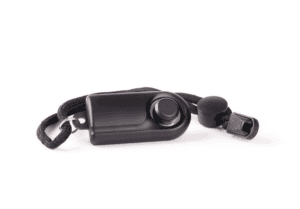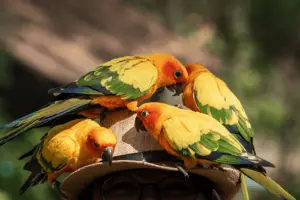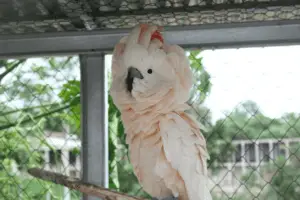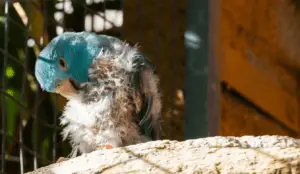As the third most popular pet on the planet, the Budgie is an exceptional pet available in various colors. The fact that they are affordable and available in different colors has played a significant role in their popularity.
On top of that, they’re amazing creatures that can quickly learn how to talk, but have you noticed the many variations available worldwide? Most breeders classify these colorful creatures according to their variety and color instead of their breed.
Key Takeaways
- Lutino budgie is the most expensive and rarest Budgie available.
- The first mutation, a yellow-colored budgie, occurred in Belgium in 1875.
- Budgie colors are available in several base color mutations, with the popular ones being white and yellow-based mutations.
- The dust feather parrot is the weakest parrot available that can live for 12 months. The fact that they’re weak means that they cannot fend for themselves.
In captivity, budgie parrots come in two primary color series: yellow-based (includes yellow, olive, gray-green, and light green) and white-based (includes white, violet, gray, mauve, cobalt, and sky blue). The blue (white-base) is recessive, and green is dominant (yellow base) in the wild.
The Budgie is available in various color mutations that make them stand out. So in this article, we’ll show you the different color variations of budgies. We’ll also show you the rare color variants that can be costly.
The Budgie Color Types
Budgie, also known as the budgerigar, is a popular pet in the US, commonly called the parakeet. Charles Coxen and John Gould introduced this parrot on European grounds in 1838.
They raised the first group of babies and discovered they were effortless to breed. Wealthy folks fell in love with the parakeets. And soon, these birds became quite popular in Holland, France, Belgium, and Germany.
One of the first mutations, which was the yellow color, occurred around 1875 in Belgium. It led to various color mutations, including light yellow, gray-green, dark green, and olive. Initially, companion budgies had green feathers until 1881, when the Dutch breeder discovered a blue chick in his nest boxes. The blue budgies’ color is responsible for several mutations, including violet, gray, slate, and cobalt.
These parrots arrived in the US in the late 1920s but didn’t take off until the 1950s. There are over 70 color variations and mutations, but some are yet to be recognized. The most common colors are white, yellow, blue, and green.
Budgie Coloration Mutations
Budgies are available in various color mutations, including several base colors. Budgie colors come in two: white-based color and yellow-based. The white-based includes white, gray, and blue. On the other hand, the yellow-based mutations include yellow, gray-green, and green. Some of these color mutations include the following:
Dark Budgerigar Mutation
One of the budgies’ most popular color mutations is the dark mutation or the dark factor. The dark factor is identical to the sky blues or wild-type light greens concerning the tail feathers. This bird’s body is darker in cobalt, greens, mauves, and olives. Plus, their tail feathers are darker. These different variations have some violet cheek patches.
The dark green’s body color is a richer shade of forest green, while cobalt’s has a deeper blue-to-azure color. The dark factor adds some degree of darkness to the parrot’s feathers. Mauve is dull purplish gray, quite different from cobalt and brilliant violet. The feathers of the mauve-colored option are almost gray.
The violet cobalt mutation is a hybrid combination of violet, dark and blue mutations. It’s a brilliant violet shade and bluer than the wild-type violet patches.
Blue Budgerigar Mutation

The blue mutations change the body feathers’ color. Usually light green to sky blue. The colors of the other parts and mask change from yellow to white in the wild type. For the domesticated ones, the mutation changes from light green to sky blue, Olive to mauve, and dark green to cobalt.
The greenish coloration of the wild option combines yellow pigment and a unique interference effect that gives color to petrol on water. But in budgies, it produces blue coloration. The yellow pigment on the outer cells forms the barbs of wild budgie feathers.
The yellow pigment is paler in younger budgies than in adults, which makes its nest feathers appear duller. On lutinos it is paler. The stronger and brighter yellow color usually appears after its first molt.
Yellowface II Budgerigar Mutation
The yellow II mutations perfectly combine Clearwing and Blue Opaline mutations. The single factor of these mutations creates a variant known as a rainbow. This mutation is like the regular light green but with a bright body color right between green and blue, resulting in a shade referred to as turquoise or sea green.
The DF yellowface II sky blue variety is similar to yellowface I sky blue. Still, its yellow pigmentation is usually brighter and leaks to the body feathers.
Violet Budgerigar Mutation
Like the dark factor, this factor adds violet color to its feathers. But it can be faint; therefore, determining if it has this factor can be challenging. The visibility of the violet factor will depend on whether it’s double, single, or the presence of blue or dark mutations. The variation of violet mutation includes:
- Skyblue with two violet factors: they have visible violet color and resemble cobalt with violet.
- Cobalt with 2 or 1 violet factor: these birds appear visibly violet.
- Skyblue with one violet factor: they have visible violet feathers near the vent and feet.
Gray Factor
This factor adds gray to your pet’s plumage. The gray factor is easier to identify than the violet factor. In this situation, it doesn’t matter if the bird has 2 or 1 gray factor since it will have a gray tinge on its feathers. The yellow-base parrot with a gray factor is gray-green, while the white ones with this factor are gray.
Albino/Lutino (Plus Lacewing and Creamino)
Generally, lutino and albino mutations are similar; they can erase the pattern and color aside from the white or yellow base. The yellow-based parrots with this mutation are yellow like a canary, referred to as lutino.
The white base with this mutation is white and known as albino. The albino and lutinos lack black feather patterns and have red eyes.
This gene is responsible for the sex-linked Z-chromosome, which means that it’ll depend on the sex of the parrot. Males require two “ino” genes, while females need one to express these genes. Ino bird with yellowface mutation is known as creamino, while the ones with cinnamon mutations are lacewings.
Lacewings have cinnamon-colored feather markings and very light violet spots on their cheeks.
Stripping Mutation
Opaline
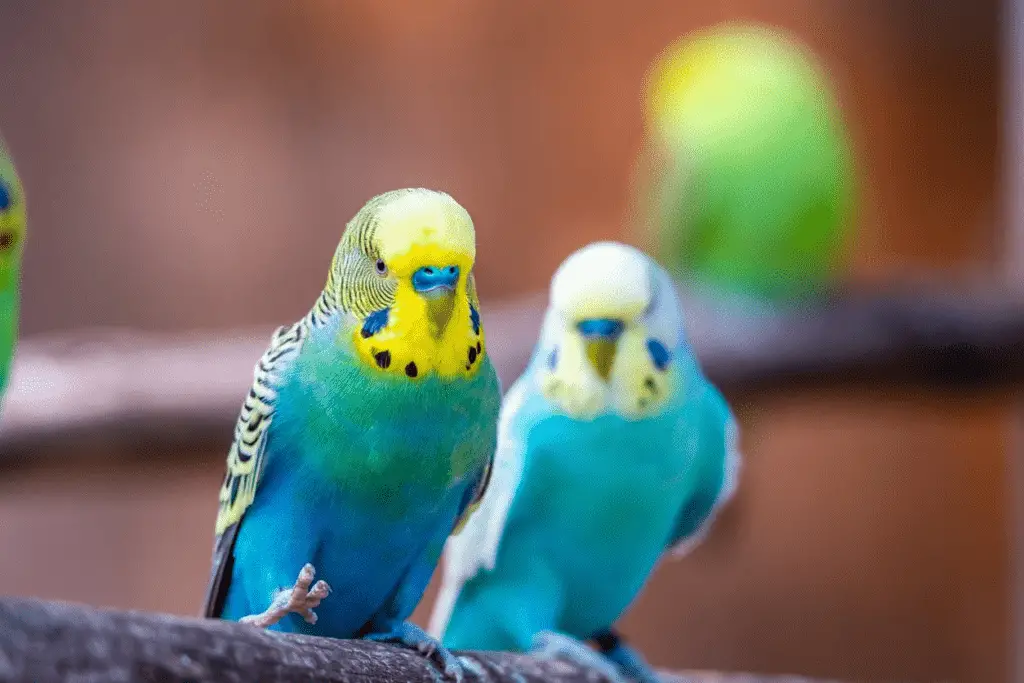
This mutation results from many changes to the distribution of patterns and color across the pet’s body. Generally, the dark pattern on its head and neck is lighter, and faint marks are around its shoulders. The body’s color quickly diffuses into its wings, creating a solid strip to its tail.
Like the albino, Opaline is recessive and linked to the Z chromosome. Therefore, the females require a single opaline allele while the males have two. Most opaline leaves it with a
brighter body than the non-opaline, particularly in the rump region and nest feathers.
Spangle
Generally, parrots with no spangle mutation don’t have black wings feathers with a white edge. The ones with one spangle factor have wings with white or yellow base color with a thin black edge. These budgies may have fewer throat spots. The ones with two spangle factors have no markings with blue feathers.
Cinnamon mutation
This mutation will turn this parrot’s dark/black patterns to light brown shade. This mutation is recessive and sex-linked to the Z-chromosomes
Pied Mutations
Dominant Pied
Birds with this mutation have numerous regions on their bodies without the structural blue color leaving the white-and-yellow base color showing. These regions are usually on the abdomen and the lower part of their wings. Both two and 1-factor dominant mutations have transparent areas; however, they may be slightly more prominent in a 2-factor dominant pied parrot.
Recessive Pied
The recessive pied parrots have fewer blue feathers, with only colored areas being small, particularly between the legs, lower belly, and rump. The parrot’s plumage is quite clear, meaning it’s white or yellow per the base color. They might have patchy or fewer black/dark markings on their wings.
Clearflight Pied
With this mutation, the budgies have clear flight feathers (white or yellow). They also have clear regions on the nape of their necks and the back of their heads. It looks the same regardless of whether it has 2 or 1 clearflight pied factor. Other than the lighter colors of the wings, it will have light blue patches on its cheeks.
What Is The Rarest Budgie Color?
Budgies have a wide variety and diversity in plumage color, so several bird lovers love them. And that’s because they cannot avoid their beauty and unique colors. The reason for the many colors is mutation. But the rarest budgie colors are dark gray color and anthracite color. Some of these rare colors include:
- Black budgerigars: they’re rare birds, and that’s because the gene mutation that causes black is quite rare. They have two primary colors under the black stripes (green and blue). Plus, their faces are black, while the furs on their bodies are either green or blue.
- Purple budgies: believe it or not, this variation does exist and is hard to resist. These birds are rare and found in neon purple or dark purple. There are very few purple budgies on the planet. They also come with blue or purple cheeks.
- The Duster feather parrot: this option is the outcome of a rare genetic mutation that forces the feathers to continue growing to enormous lengths. Because of their ever-growing feathers, this variant is relatively weak and rarely lives past one year after being hatched.
- Duster parrot continued: These birds cannot fly, making it hard for them to look for food; predators can injure and kill them. In captivity, they can be pretty demanding; you’ll have to keep their feathers well-maintained, which is quite costly. Their long feathers make them prone to poor hygiene, contributing to their short lifespan.
- The Japanese helicopter budgies: this unique mutation is relatively rare since it affects the direction of growth of its feather resulting in helicopter propeller-shaped feathers. This parrot, also known as Hagoromo in Japanese, refers to the helicopter. This Budgie first appeared in the 1960s, but the helicopter-shaped feathers make it hard for these birds to fly.
- Rainbow budgies: as their name suggests, their feathers resemble a rainbow. They come with a golden head followed by bluish, yellow, or purple feathers.
- Half sider budgies: half of their bodies are different colored than the other half. One half may be blue, while the other is greenish. This parrot seems unreal; the two colors make it one of the most beautiful parrots available.
- Lutino budgies: these are the rarest mutations available. These birds have completely yellowish wings, rose-colored eyes, and orange beaks. They are rare and can be considered the most expensive option available.
Final Verdict
Budgies are the most beautiful birds available, thanks to their variant colors. These birds have been around for centuries. Thanks to breeding, many variants are available, with the rarest mutation being the Lutino budgies. This variant is a bright yellowish body with white cheeks. These birds have undergone mutations over the years.
Another rare budgie is the half-sider parrot, which has two different colors. One half is greenish, while the other side is bluish. Therefore, if you love colorful parrots, you should look for these rare birds and bring your aviary to life with some of the most colorful birds available.
- Budgerigar (Common Parakeet), https://www.google.co.ke/books/edition/Manual_of_Exotic_Pet_Practice/JMTUKwzPEvwC?hl=en&gbpv=1&dq=budgie+color&pg=PA253&printsec=frontcover/ Accessed March 18, 2023
- You say potato, I say po-tah-to: The American parakeet vs. the English Budgie, https://www.google.co.ke/books/edition/Parakeets_For_Dummies/EGY9BZnLMz4C?hl=en&gbpv=1&dq=budgie+color+mutation&pg=PA3&printsec=frontcover/ Accessed March 18, 2023
- Wikipedia contributors, Dark budgerigar mutation, https://en.wikipedia.org/wiki/Dark_budgerigar_mutation/ Accessed March 18, 2023
- Wikipedia contributors, Blue budgerigar mutation, https://en.wikipedia.org/wiki/Blue_budgerigar_mutation/ Accessed March 18, 2023
- Wikipedia contributors, Yellowface II budgerigar mutation, https://en.wikipedia.org/wiki/Yellowface_II_budgerigar_mutation/ Accessed March 18, 2023
- Wikipedia contributors, Violet budgerigar mutation, https://en.wikipedia.org/wiki/Violet_budgerigar_mutation/ Accessed March 18, 2023
- Wikipedia contributors, Opaline budgerigar mutation, https://en.wikipedia.org/wiki/Opaline_budgerigar_mutation/ Accessed March 18, 2023



